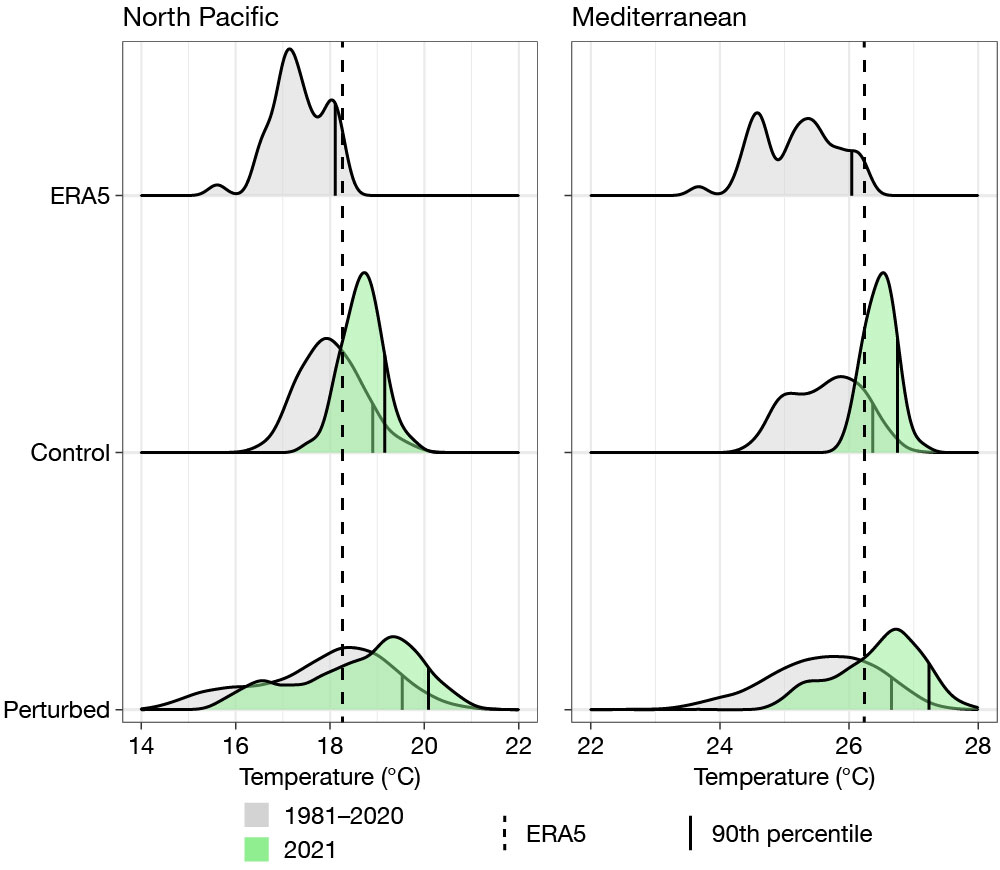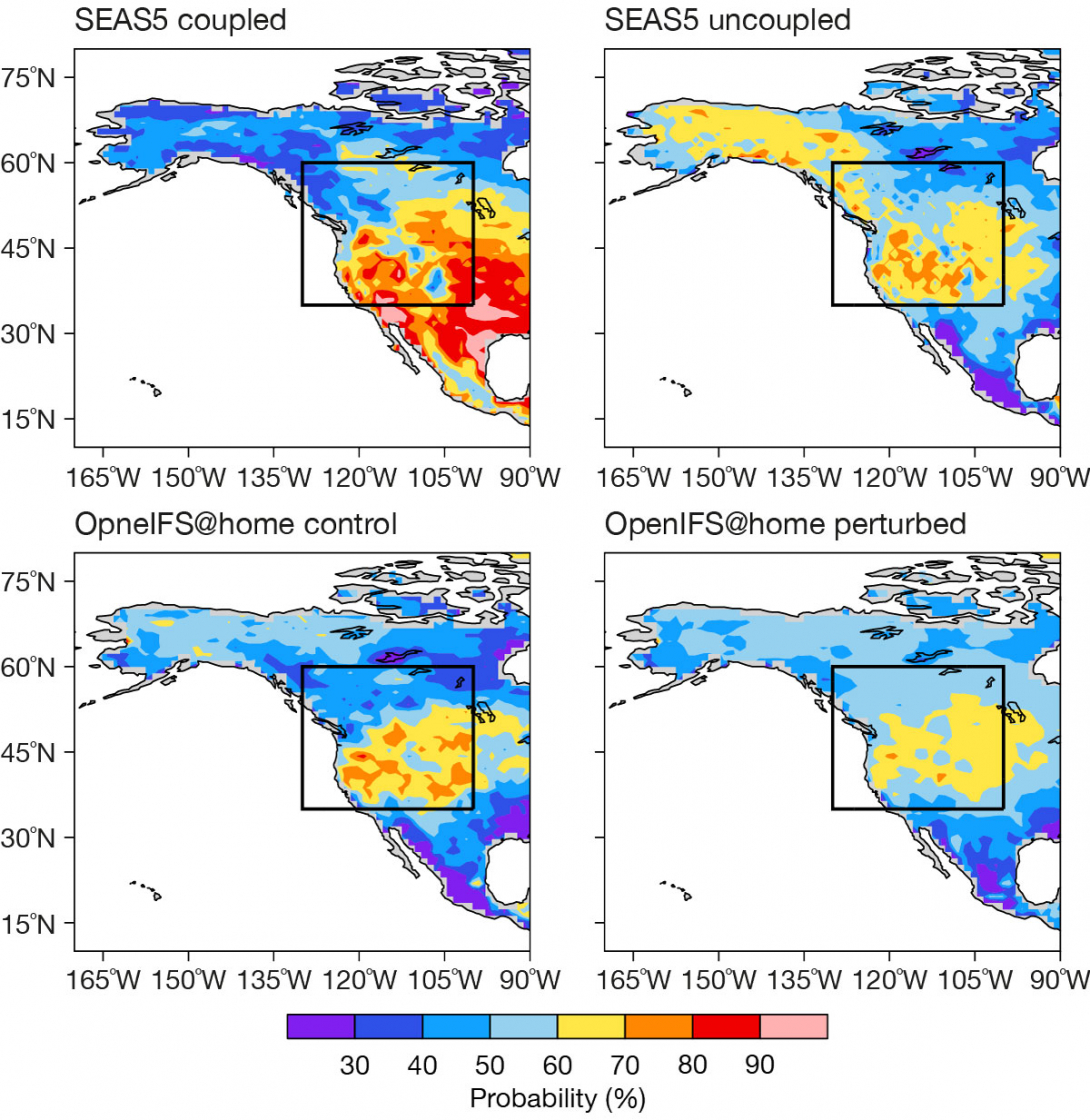OpenIFS@home, a distributed forecasting system developed between the University of Oxford and ECMWF, provides the unique opportunity to run very large ensembles of OpenIFS Cycle 43r3 with specific model configurations from weather to seasonal timescales. Despite running at a relatively coarse resolution of about 110 km horizontally and 60 vertical levels, forecasts using land surface perturbations were comparable to the uncoupled version of ECMWF’s seasonal forecasting system (SEAS5) in successfully predicting 2 m air temperature for the extreme June–July–August (JJA) 2021 summer heatwaves over regions of the North Pacific and the Mediterranean. SEAS5 is run in coupled mode operationally, but a version that is uncoupled from the ocean can be run for experimentation purposes.
Forecast set-up
Seasonal forecasts for JJA 2021 were initialised on 1 May 2021, with hindcasts going back each year to 1981 for the same forecast period. With the objective of allowing parameter perturbations to be activated within OpenIFS@home, five land surface variables, considered to be particularly sensitive in the literature, were perturbed: total soil depth excluding the top soil layer, saturated conductivity, Van-Genuchten alpha, soil moisture stress function, and minimum stomatal resistance. This was done through a set of percentages (–80%, –40%, 0%, 40%, 80%), where the perturbation percentage applies to the default parameter for the soil type at a particular grid point. With five parameters and five possible values, a total of 3,125 ensemble members is generated by applying all possible combinations of the five parameters. However, as OpenIFS@home uses a citizen-science approach which utilises volunteers’ personal computers, some model failures are expected. Accounting for these, 2,965 members were used for the 2021 perturbed runs, with an average of 907 members for each hindcast year. A control OpenIFS@home forecast without the perturbations and just 51 members was also run.
An exceptional season
The first figure shows the percentile rank of 2 m temperature for the JJA 2021 season according to ECMWF’s ERA5 reanalysis in relation to the model climatology (1981–2021) for the North Pacific land region considered. The light pink shading dominates western North America, indicating that JJA 2021 was the hottest season within the analysed period. Indeed, the Canadian observed temperature record was broken by 4.6°C, with a new record temperature of 49.6°C set in Lytton, British Colombia.

Forecast performance
The second figure shows a clear shift in probability towards higher temperatures in JJA 2021 for both the control and perturbed OpenIFS@home forecasts over both the North Pacific and Mediterranean land regions. This shift is more pronounced in the control, with a higher probability of forecasts indicating higher temperatures, whilst the distribution for the perturbed runs is more widespread, indicating a larger range of uncertainties and a long tail towards colder temperatures. Observing the final figure, the SEAS5 uncoupled, control and perturbed forecasts are comparable with between 60% and 70% of ensemble members predicting that temperatures for the JJA 2021 season will fall in the highest quintile of the associated model climate. This percentage is slightly higher in some regions of the control and SEAS5 uncoupled forecasts, highlighting the increased spread in the perturbed forecasts.


Next steps and recommendations
These results are the first of multiple upcoming forecasts where OpenIFS@home has been run on a seasonal timescale, and it is the first with land surface perturbations. Further analysis is required using the existing dataset produced from these simulations. The next development phase could attempt to increase the horizontal resolution of the model to about 80 km, with 90 vertical levels. Finally, data produced from OpenIFS@home could be used as input into hydrological and routing models to gain insight into the potential role that large ensembles could play in flood forecasting.
